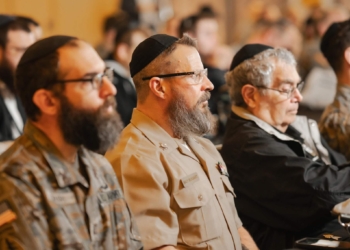Some spouses of the approximately 200,000 service members transitioning out of the military this year now have access to one-on-one career assistance at select installations through the Department of Labor’s Employment Navigator and Partnership Pilot (ENPP). Launched last spring, ENPP supplements the Transition Assistance Program (TAP) to address civilian employment needs of service members leaving the military — and their spouses.
What does ENPP provide?
Personal assessments, resources and individual guidance at 13 installations around the globe. The program is an optional service available to interested transitioning service members and spouses participating in TAP instruction at these locations. An Employment Navigator (EN) helps job-seekers identify and pursue a path to a fulfilling career outside the military.
ENPP professionals use personal assessments in conjunction with a variety of resources to facilitate a successful transition into the civilian workforce. ENs connect job seekers with opportunities available through a number of partner organizations for apprenticeships, mentorship, networking, referrals, trainings, hiring events and more to boost the effectiveness of the civilian job search. Current partnering organizations include ACP, Combined Arms, Helmets to Hardhats, Hire Heroes USA, LinkedIn, RecruitMilitary, Veterans Ascend, VetJobs and zero8hundred.
This comes as good news for military spouses who may have had to compromise on their careers to support their service member’s commitment. According to the Blue Star Families Military Family Lifestyle Report 2020 results, only 18% of spouses of active-duty service members were able to retain employment throughout a move to a new duty station. For example, while programs do exist to transfer some licensing across state lines, many spouses at overseas locations are not often able to take advantage of such benefits. This can lead to gaps in resumes or underemployment, which was revealed by the survey to be the case for two-thirds (67%) of employed respondents.
ENPP highlights:
- The intent of ENPP is to provide those separating from the military with skills and tools that build on the foundation provided in the required TAP during the last year of service.
- This program is optional, available outside the formal instruction of the Department of Labor’s TAP curriculum. One-to-one assistance used alongside other transition programs, such as those within each service branch and in local communities, helps improve outcomes of placement in a satisfying career that lasts.
- Additional resources provided by ENPP to achieve employment success include self-assessments, skills testing, career exploration, resume reviews, identification of high-demand occupations, identification of necessary credentials and review of labor market details.
- Transitioning service members or spouses must be within two years of retirement or 365 days of separation and participating in TAP services at one of the 15 locations listed below to take advantage of the ENPP program. Current participating locations are:
Army: Fort Benning, Fort Drum, Fort Shafter, Fort Sill, Schofield Barracks, USAG Bavaria
Marine Corps: Camp Pendleton, MCAS Miramar, MCAS Cherry Point, Okinawa
Navy: Naval Station Norfolk, Joint Base Pearl Harbor-Hickam, CFA Yokosuka
Air Force: Travis AFB, Kadena Air Base, Joint Base Charleston
For more information on services available and partnerships with ENPP, see the Department of Labor’s website.
Read comments







































